Caryn’s Thoughts
 There are phenomena that sometimes manifest in the sky seem supernatural, although scientists often have other explanations. I rather think they are supernatural…as in coming from God. Such occurrences were first reported by mountain climbers before the era when airplane travel was common. I’m sure they still see them today too. Climbers would reach a mountain’s summit and suddenly see what seemed to be a figure standing in the distance. I must admit that such a sight would be a little disconcerting, but I wouldn’t mind seeing one. In the mid-1700s, members of a French scientific expedition ascended Pambamarca, a mountain in Ecuador. It seemed like a normal ascent, but when they reached its peak, they witnessed the sun breaking through the clouds, casting their shadows and encircling their heads with halo-like rings. Maybe that is how it happens, but I would say that the conditions would have to be exactly right for this to happen, and I think that is God. I can only imagine their thoughts at that moment…probably fear mixed with curiosity.
There are phenomena that sometimes manifest in the sky seem supernatural, although scientists often have other explanations. I rather think they are supernatural…as in coming from God. Such occurrences were first reported by mountain climbers before the era when airplane travel was common. I’m sure they still see them today too. Climbers would reach a mountain’s summit and suddenly see what seemed to be a figure standing in the distance. I must admit that such a sight would be a little disconcerting, but I wouldn’t mind seeing one. In the mid-1700s, members of a French scientific expedition ascended Pambamarca, a mountain in Ecuador. It seemed like a normal ascent, but when they reached its peak, they witnessed the sun breaking through the clouds, casting their shadows and encircling their heads with halo-like rings. Maybe that is how it happens, but I would say that the conditions would have to be exactly right for this to happen, and I think that is God. I can only imagine their thoughts at that moment…probably fear mixed with curiosity.
The mountain tops are not the only place this has been seen. Now that we are in the era of travel by planes, passengers gazing out of airplane windows have observed not just the aircraft’s shadow but also a rainbow ring encircling it, resembling a halo. Again, scientists have a tendency to explain this away, but I believe rainbows come from God. The phenomenon is known as a glory, pilot’s glory, or pilot’s halo. This phenomenon is not caused by the plane’s shadow itself but often appears alongside it, hence the name. That is part of the reason I don’t think it is an optical illusion. If it is, why don’t more people see it, more often?
A German physicist in the early 1900s, named Gustav Mie, went so far as to develop a mathematical formula to describe the scattering of light by water droplets in the air. I can’t imagine what mathematics would have to do with it, but the thought captivated him anyway. According to an article in the Bulletin of the American Meteorological Society, “glories are produced by the backscattering, or angular deflection, of sunlight by minuscule water droplets in the atmosphere—droplets so small they measure just tens of wavelengths in diameter.” Scientists believe that the size of the rings varies with different wavelengths of light, depending on the average diameter of the droplets and their distribution. To observe a glory, one must be positioned directly between the light source and the water droplets, which explains why glories often appear alongside shadows. That’s where I start to think things would have to be a “little bit too perfect” for this to be coincidence.
Mie’s mathematics did not fully account for the workings of glories…little wonder there. In the 1980s, Nussenzveig and NASA scientist Warren Wiscombe discovered that the light contributing to a glory often does 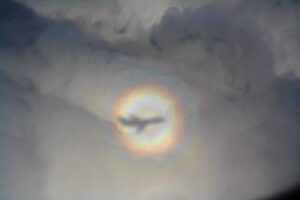
 not pass through the droplets. A 2014 article in Nature magazine believes that wave tunneling is primarily responsible for glories. This process supposedly occurs when sunlight comes close enough to a droplet to induce electromagnetic waves inside it. These waves circulate within the droplet before escaping, emitting the light rays that form the bulk of the glory observed. Believe what you want, but I think that these are little gifts from God.
not pass through the droplets. A 2014 article in Nature magazine believes that wave tunneling is primarily responsible for glories. This process supposedly occurs when sunlight comes close enough to a droplet to induce electromagnetic waves inside it. These waves circulate within the droplet before escaping, emitting the light rays that form the bulk of the glory observed. Believe what you want, but I think that these are little gifts from God.
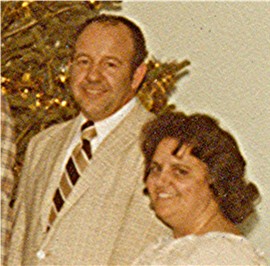
 My uncle, Jim Richards is a “teddy bear” of a man who is loved by all who know him. I say “teddy bear” because he has the personality of what we would expect a “teddy bear” to have. He is kind and caring and he would give you the shirt off his back, if you needed one. I don’t think he has ever had an enemy in his life. Uncle Jim is always soft-spoken and quiet…and maybe just a little bit shy.
My uncle, Jim Richards is a “teddy bear” of a man who is loved by all who know him. I say “teddy bear” because he has the personality of what we would expect a “teddy bear” to have. He is kind and caring and he would give you the shirt off his back, if you needed one. I don’t think he has ever had an enemy in his life. Uncle Jim is always soft-spoken and quiet…and maybe just a little bit shy.
My aunt, Sandy Pattan (Aunt Dixie’s younger sister) and I, along with my sister Caryl have gone to visit recently, and it has been so fun to spend some time with the Richards family. Whenever we go to visit, Uncle Jim is happy to “give the women their space” by setting himself up in front of the television watching sports. I’m sure that all the girl talk going on in the dining room would be boring to Uncle Jim anyway. Watching sports is much more to his liking. He loves the Broncos, but they aren’t always playing. I don’t think it really matters to him, any football game works…when the Broncos aren’t playing. If the Broncos are playing, Uncle Jim is going to be watching.
Uncle Jim is and always was a family man. His family is his top priority, and they feel the same way about him. They are a close family. Uncle Jim and Aunt Dixie live with their daughter Jeannie Liegman and her son Jacob, but daughter Raylynn Williams, her husband Doug, and children Gabriel, Gideon, Noah, and Mayme live across the road. Meals are together as a family. It really makes the family close. Uncle Jim and Aunt Dixie have always been willing to help out family members when needed, whether it was his family or her family, they were there for them, even taking in extras over the years. They never lost that sense of family loyalty, and that is a great 
 testament to their kind and loving hearts. Uncle Jim lost his dad at a young age, and he took on much of the roll of man of the house from that time on…and he was just one month shy of nine years old. He wasn’t the oldest child either, he just knew what was needed, and he did it. His whole family looked to him for guidance many times. That shows that he possessed wisdom beyond his young years. That is amazing and I highly respect his caring ways toward his family in their times of need. Today is Uncle Jim’s 87th birthday. Happy birthday Uncle Jim!! Have a great day!! We love you!!
testament to their kind and loving hearts. Uncle Jim lost his dad at a young age, and he took on much of the roll of man of the house from that time on…and he was just one month shy of nine years old. He wasn’t the oldest child either, he just knew what was needed, and he did it. His whole family looked to him for guidance many times. That shows that he possessed wisdom beyond his young years. That is amazing and I highly respect his caring ways toward his family in their times of need. Today is Uncle Jim’s 87th birthday. Happy birthday Uncle Jim!! Have a great day!! We love you!!
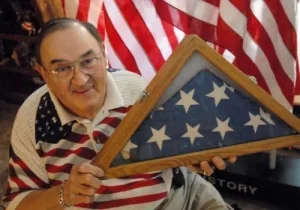
 We have all heard about the importance of thinking ahead. It’s important in many situations, but unfortunately, it isn’t always appreciated. One case of forward thinking that rather backfired is the case of Robert G Heft. Heft, who went by Bob, was in high school in 1958, when his history teacher, Stanley Pratt, asked his class to make anything they wanted and bring it in for a show-and-tell. Heft took a little bit different approach than his classmates, and it rather backfired. While most of his classmates designed a conventional approach for their class project, Heft decided to do something a little more ambitious.
We have all heard about the importance of thinking ahead. It’s important in many situations, but unfortunately, it isn’t always appreciated. One case of forward thinking that rather backfired is the case of Robert G Heft. Heft, who went by Bob, was in high school in 1958, when his history teacher, Stanley Pratt, asked his class to make anything they wanted and bring it in for a show-and-tell. Heft took a little bit different approach than his classmates, and it rather backfired. While most of his classmates designed a conventional approach for their class project, Heft decided to do something a little more ambitious.
It was a noble effort, and definitely forward thinking, but when Heft brought his flag to school, his teacher was not impressed. Years later, Heft recalled, “He told me, ‘Why you got too many stars? You don’t even know how 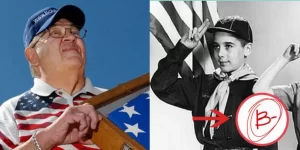 many states we have.'” Heft received a B- for his project. Nevertheless, he was offered an opportunity to enhance his grade by persuading the US government to adopt his flag design. Despite the slim chances, Heft was determined. He initiated a campaign, writing letters and placing calls to the White House, urging the president to consider his flag.
many states we have.'” Heft received a B- for his project. Nevertheless, he was offered an opportunity to enhance his grade by persuading the US government to adopt his flag design. Despite the slim chances, Heft was determined. He initiated a campaign, writing letters and placing calls to the White House, urging the president to consider his flag.
Two years after Alaska and Hawaii were admitted as states, Heft was surprised with a call from President Dwight D Eisenhower, informing him that his design had been selected for the new 50-star flag. On July 4, 1960, Heft was honored with an invitation from President Eisenhower to attend a flag-raising ceremony at the US Capitol in Washington DC. Even Heft’s history teacher was impressed, saying, “I guess if it’s good enough for Washington, it’s good enough for me. I hereby change the grade to an A.” Well, that took a fair amount of decency on the part of the teacher. He could have let it go, but he didn’t.
Since that time, Heft’s banner has established a new record as the longest-serving U.S. flag. Heft pursued a career as a professor at Northwest State Community College in Archbold, Ohio, and held the position of mayor in Napoleon, Ohio. He gained recognition as a motivational speaker and made 14 visits to the White House. Anticipating future changes, Heft also crafted a 51-star American flag in the event that Washington DC, or Puerto Rico achieves statehood. His 51-star flag design features six alternating rows of stars with nine and 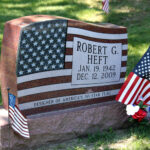
 eight stars each.
eight stars each.
Heft, born in Saginaw, Michigan on January 19, 1942. He left Michigan following his parents’ separation when he was around a year old. He returned upon retiring from his professorship at Northwest State Community College in Archbold, Ohio. Robert G Heft, who passed away on December 12, 2009, at a hospital in Saginaw, Michigan, at the age of 67, will always be remembered as the student who created the 50-star American flag design.
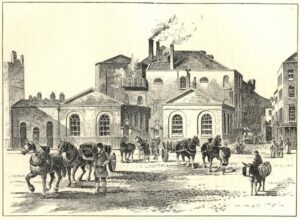
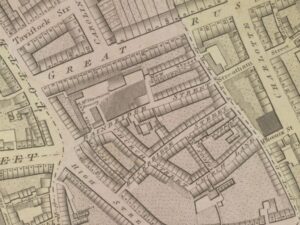 The London Beer Flood occurred as a result of an accident at Meux and Company’s Horse Shoe Brewery in London on October 17, 1814. The disaster unfolded when a 22-foot-tall wooden vat containing fermenting porter ruptured. The force of the escaping beer dislodged the valve of another vat and caused the destruction of several large barrels, releasing a total of between 128,000 and 323,000 imperial gallons (approximately 154,000 to 388,000 US gallons) of beer.
The London Beer Flood occurred as a result of an accident at Meux and Company’s Horse Shoe Brewery in London on October 17, 1814. The disaster unfolded when a 22-foot-tall wooden vat containing fermenting porter ruptured. The force of the escaping beer dislodged the valve of another vat and caused the destruction of several large barrels, releasing a total of between 128,000 and 323,000 imperial gallons (approximately 154,000 to 388,000 US gallons) of beer.
The wave of porter demolished the brewery’s rear wall and flooded the Saint Giles rookery, a slum area. Eight individuals died, including five mourners attending a wake for a two-year-old boy being held by an Irish family. The coroner’s inquest concluded that the eight died “casually, accidentally and by misfortune.” The brewery nearly faced bankruptcy due to the incident but was saved by a tax rebate from HM Excise on the beer lost. Following the disaster, the brewing industry moved away from using large wooden vats. In 1921, the brewery relocated, and the Dominion Theatre now stands in its place. Meux and Company was liquidated in 1961.
In the early 19th century, Meux Brewery was one of London’s two largest breweries, alongside Whitbread. Sir Henry Meux acquired the Horse Shoe Brewery in 1809, located at the intersection of Tottenham Court Road and Oxford Street. His father, Sir Richard Meux, had earlier been a co-owner of the Griffin Brewery on Liquor-Pond Street, now known as Clerkenwell Road, where he built London’s largest vat, with a capacity of 20,000 imperial barrels. Henry Meux followed in his father’s footsteps by constructing a large vat, a wooden vessel standing 22 feet high and capable of holding 18,000 imperial barrels. To reinforce the vat, eighty long tons of iron hoops were utilized. Meux exclusively brewed porter, a dark beer originating from London and highly favored as the capital’s most popular alcoholic beverage. In the year leading up to July 1812, Meux and Company produced 102,493 imperial barrels. The porter was aged in these large vessels for several months, and up to a year for the highest quality brews.
Behind the brewery lay New Street, a small dead-end road connecting to Dyott Street, situated within the Saint Giles rookery. Spanning eight acres, the rookery was a constantly deteriorating slum teetering on the brink of social and economic collapse, as noted by Richard Kirkland, a professor of Irish literature. Thomas Beames, a preacher at Westminster St James and the author of “The Rookeries of London: Past, Present and Prospective” (1852), referred to the Saint Giles rookery as a gathering place for society’s outcasts. This area also served as the muse for William Hogarth’s 1751 artwork, “Gin Lane.”
Around 4:30pm on October 17, 1814, George Crick, the storehouse clerk at Meux’s Brewery, noticed that one of the iron bands weighing 700 pounds had slipped off a vat. The vessel, standing 22 feet tall, was nearly full, containing 3,555 imperial barrels of ten-month-old porter, filled to within four inches from the top. Since such slippages occurred two or three times annually, Crick was not alarmed. He reported the issue to his supervisor, who assured him it would cause no harm. Crick was instructed to write a note to Mr Young, a brewery partner, to address the repair later.
An hour after a hoop detached, Crick stood thirty feet from the vat, note in hand for Mr Young, when suddenly, the vat burst without warning. The released liquid’s force dislodged a stopcock from an adjacent vat, causing it to release its contents; several hogsheads of porter were lost, contributing to the deluge. An estimated 128,000 to 323,000 imperial gallons were spilled. The brewery’s rear wall, 25 feet high and two and a half bricks thick, was demolished by the force. Bricks from the wall were propelled upwards, landing on the roofs of houses along Great Russell Street.
A 15-foot-high wave of porter crashed into New Street, demolishing two houses and severely damaging two others. In one of the destroyed homes, four-year-old Hannah Bamfield was having tea with her mother and another child when the beer wave swept the mother and the other child into the street, resulting in Hannah’s death. At the second house, a wake for a two-year-old boy was in progress; the boy’s mother, Anne Saville, and four mourners perished. Eleanor Cooper, a 14-year-old servant at the Tavistock Arms on Great Russell Street, was killed by a collapsing brewery wall while she was washing pots. Another victim, Sarah Bates, was found deceased in a different house on New Street. The surrounding land, being flat and poorly drained, allowed the beer to flood into cellars, forcing inhabitants to climb onto furniture to escape drowning. Everyone at the brewery survived, though three workers were rescued from the debris; the superintendent and one worker were taken to Middlesex Hospital with three others.
Rumors began to emerge of hundreds gathering to collect the beer, followed by widespread drunkenness, and a fatality due to alcohol poisoning days later. However, brewing historian Martyn Cornell insists that contemporary newspapers did not mention such chaos or the subsequent death; rather, they depicted the crowds as orderly. Cornell notes that the prevalent press at the time harbored an aversion to the immigrant Irish community in Saint Giles, suggesting that any misconduct would have been reported.
The vicinity behind the brewery revealed a “scene of desolation [that] presents a most awful and terrific appearance, akin to what one might expect from fire or earthquake.” Brewery watchmen charged onlookers to see the remnants of the shattered beer vats, attracting several hundred viewers. Those mourners who perished in the cellar received their own vigil at The Ship public house on Bainbridge Street. Meanwhile, the other victims were displayed by their families in a nearby yard, drawing public attention and financial contributions for their burials. Broader fundraising efforts were also initiated for the affected families.
The coroner’s inquest was held at the Workhouse of the Saint Giles parish on October 19, 1814; George Hodgson, the coroner for Middlesex, oversaw proceedings. The details of the victims were read out as: Eleanor Cooper, age 14; Mary Mulvey, age 30; Thomas Murry, age 3 (Mary Mulvey’s son); Hannah Bamfield, age 4 years 4 months; Sarah Bates, age 3 years 5 months; Ann Saville, age 60; Elizabeth Smith, age 27; and Catherine Butler, age 65.
Hodgson led the jurors to the event’s location, where they observed the brewery and the deceased prior to gathering witness testimony. The initial testimony came from George Crick, who witnessed the entire incident; his brother was among the injured at the brewery. Crick noted that the vat hoops would fail a few times annually, yet this had not previously led to any incidents. Testimonies were also presented by Richard Hawse, the proprietor of the Tavistock Arms, who lost a barmaid in the tragedy, among others. The jury concluded that the eight victims died “casually, accidentally, and by misfortune”. When the coroner’s inquest concluded with a verdict of an act of God, Meux and Company were not required to pay compensation. However, the disaster, including the lost porter, the damaged buildings, and the vat replacement, cost the company £23,000. Following a private petition to Parliament, they received approximately £7,250 from HM Excise, which prevented their bankruptcy. The Horse Shoe Brewery resumed operations shortly thereafter but ceased in 1921 when Meux 
 transferred their production to the Nine Elms brewery in Wandsworth, acquired in 1914. At closure, the brewery spanned 103,000 square feet. It was demolished the subsequent year, and the Dominion Theatre was constructed on its location. Meux and Company was liquidated in 1961. Following the accident, the brewing industry gradually replaced large wooden tanks with lined concrete vessels.
transferred their production to the Nine Elms brewery in Wandsworth, acquired in 1914. At closure, the brewery spanned 103,000 square feet. It was demolished the subsequent year, and the Dominion Theatre was constructed on its location. Meux and Company was liquidated in 1961. Following the accident, the brewing industry gradually replaced large wooden tanks with lined concrete vessels.
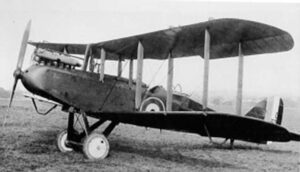
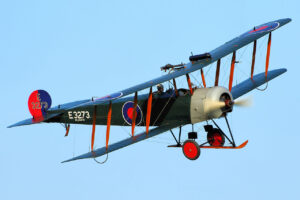 The 603 (City of Edinburgh) Squadron, part of the Royal Auxiliary Air Force (RAF), is stationed in Edinburgh, Scotland. Established on October 14, 1925, at RAF Turnhouse, it served as a day bomber unit within the Auxiliary Air Force. Initially, the squadron operated DH.9As (a British single engine biplane) and utilized Avro 504Ks (a biplane bomber) for training purposes. In March 1930, it transitioned to Wapitis (a two-seater general purpose military biplane), which were subsequently replaced by Harts (a British two-seater biplane light bomber) in February 1934. On October 24, 1938, the squadron was reclassified as a fighter unit, operating Hinds (a British light bomber) until the introduction of Gladiators (a British biplane fighter) in late March 1939. Over those years the men of 603 Squadron made many equipment transitions.
The 603 (City of Edinburgh) Squadron, part of the Royal Auxiliary Air Force (RAF), is stationed in Edinburgh, Scotland. Established on October 14, 1925, at RAF Turnhouse, it served as a day bomber unit within the Auxiliary Air Force. Initially, the squadron operated DH.9As (a British single engine biplane) and utilized Avro 504Ks (a biplane bomber) for training purposes. In March 1930, it transitioned to Wapitis (a two-seater general purpose military biplane), which were subsequently replaced by Harts (a British two-seater biplane light bomber) in February 1934. On October 24, 1938, the squadron was reclassified as a fighter unit, operating Hinds (a British light bomber) until the introduction of Gladiators (a British biplane fighter) in late March 1939. Over those years the men of 603 Squadron made many equipment transitions.
In August 1939, the squadron commenced yet another transition, this time to Spitfires (a British single-seat fighter aircraft). As the war loomed closer, the squadron shifted to full-time operations. Within two weeks of the outbreak of World War II, Brian Carbury was permanently assigned, and the squadron started receiving Spitfires, transferring its Gladiators to other squadrons throughout October.
Scotland was within the range of Nazi Germany’s long-range bombers and reconnaissance planes. The Luftwaffe primarily targeted the Royal Naval Home Fleet at Scapa Flow. The 603 Squadron, now equipped with Spitfires, was ready in time to intercept the first German air raid on the British Isles on October 16th. It succeeded in shooting down a Junkers Ju 88 bomber over the Firth of Forth, north of Port Seton…marking the first enemy aircraft downed over Great Britain since 1918 and the RAF’s initial victory in World War II. The squadron continued its defensive role in Scotland until August 27, 1940, after which it rotated to Southern England, joining Number 11 Group at RAF Hornchurch. There, it participated in the remaining months of the Battle of Britain, starting from August 27, 1940.
Two days after becoming operational in southern England, Carbury secured his first of 15½ victories (not sure how one has a half victory), ranking as the fifth highest scoring fighter ace of the battle. He received the Distinguished Flying Cross and Bar with 603 Squadron during the conflict. Air Commodore Ronald ‘Ras’ Berry achieved approximately 9 (of a final total of 14) victories at this time, while RAF Officer ‘Sheep’ Gilroy claimed more than 6 victories. Flight Lieutenant Richard Hillary, with 5 victories, was shot down on September 3rd during a skirmish with BF 109s of Jagdgeschwader 26 off Margate at 10:04am. Rescued by the Margate lifeboat, he suffered severe burns and subsequently spent three years in hospital, where he authored the book, The Last Enemy. Recent academic research, including an examination of German records, has identified 603 Squadron as the highest-scoring squadron in the Battle of Britain by its conclusion.
Upon returning to Scotland in late December, Carbury inflicted damage on a Ju 88 over Saint Abb’s Head on Christmas Day. He then departed from the squadron in January 1941 to serve as an instructor at the Central 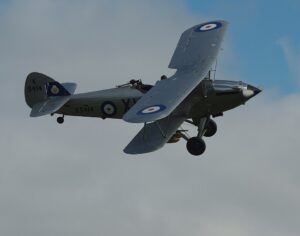
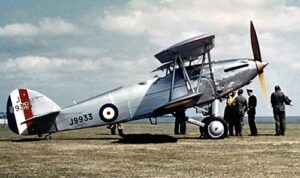
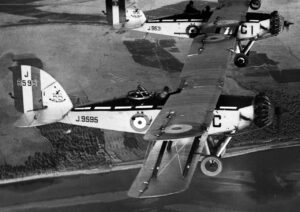 Flying School. By May 1941, the squadron had relocated southward to participate in sweeps over France, known as “rhubarbs,” which continued until the year’s end.
Flying School. By May 1941, the squadron had relocated southward to participate in sweeps over France, known as “rhubarbs,” which continued until the year’s end.
Following a period in Scotland, 603 Squadron departed in April 1942 for the Middle East, with its ground echelon arriving in early June. Simultaneously, Flight Sergeant Joe Dalley transitioned from the squadron to Photographic Reconnaissance Unit (PRU) duties, piloting a Spitfire PR from RAF Benson directly to Malta. There, he joined 69 Squadron RAF, becoming one of the four pilots dubbed the “Eyes and Ears” of the Island. The squadron’s aircraft were loaded onto the US aircraft carrier Wasp and launched towards Malta on April 20th to bolster the island’s hard-pressed defenders. After almost four months of defending Malta, the surviving pilots and planes were integrated into 229 Squadron on August 3, 1942.
By the end of June 1942, the ground echelon of 603 Squadron had relocated to Cyprus, where it operated as a servicing unit for six months before its return to Egypt. In February 1943, the arrival of Bristol Beaufighters and their crews marked the commencement of convoy patrols and escort missions along the North African coastline. August saw the initiation of sweeps over the Aegean’s German-occupied islands and areas off Greece. The squadron continued its assaults on enemy shipping until a scarcity of targets facilitated its return to the UK in December 1944.
On January 10, 1945, 603 Squadron reformed at RAF Coltishall and, in a curious twist of fate, inherited the Spitfires and some personnel of 229 Squadron RAF…the very squadron that had previously absorbed 603 Squadron at Ta’ Qali in 1942. Fighter-bomber operations commenced in February over the Netherlands and persisted until April. Subsequently, the squadron returned to its home base at Turnhouse for the concluding days of the war. The squadron was officially disbanded on August 15, 1945.
603 Squadron was reestablished as part of the Auxiliary Air Force on May 10, 1946, and started recruiting for a Spitfire squadron in June at RAF Turnhouse. The squadron received its first Spitfire in October and operated this aircraft until it transitioned to the De Havilland Vampire FB.5s in May 1951. By July, the squadron was fully equipped with the new aircraft, which it flew until the unit was disbanded on March 10, 1957.
The new 603 Squadron originated from Number 2 (City of Edinburgh) Maritime Headquarters Unit in October 1999, providing the foundation for the new 602 (City of Glasgow) Squadron RAuxAF in 2006. 603 Squadron continued to be based in Edinburgh. In 2007, to mark the 50th Anniversary of the Battle of Britain Memorial Flight, the Flight’s Supermarine Spitfire IIa, P7350, which served in 603 Squadron during the Battle of Britain, bore the squadron’s code XT-L, the same as Gerald ‘Stapme’ Stapleton’s personal aircraft, for two years.
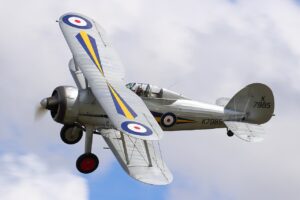
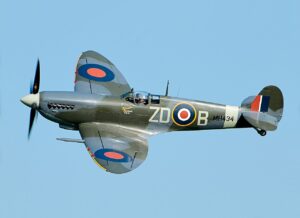 For several years leading up to 2013, the main trade at 603 Squadron was the RAF Regiment, although the Squadron also provided support in Mission Support and Flight Operations trades. In late 2012, it was announced that the Squadron would start recruiting for the RAF Police in 2013. Consequently, the Squadron has transitioned to primarily being an RAF Police unit, while still retaining a Flight of the RAF Regiment.
For several years leading up to 2013, the main trade at 603 Squadron was the RAF Regiment, although the Squadron also provided support in Mission Support and Flight Operations trades. In late 2012, it was announced that the Squadron would start recruiting for the RAF Police in 2013. Consequently, the Squadron has transitioned to primarily being an RAF Police unit, while still retaining a Flight of the RAF Regiment.
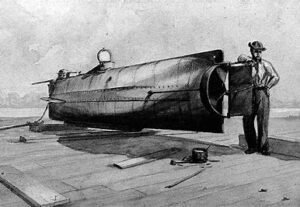
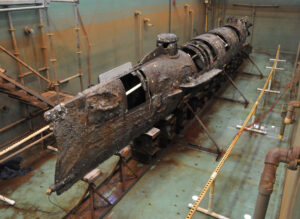 At the onset of the Civil War, combat involved bayonets, horses, wooden ships, and inaccurate artillery. As the war progressed, the armaments evolved to include mines, precise firearms, more lethal bullets, torpedoes, and ironclad ships as the new norm. Although the majority of battles were fought on land, the struggle for naval supremacy was a pivotal aspect of the war. Control over the coastline meant control over vital imports from Europe and Coastal America, including essential supplies like clothing, food, artillery, medicine, and occasionally, reinforcements.
At the onset of the Civil War, combat involved bayonets, horses, wooden ships, and inaccurate artillery. As the war progressed, the armaments evolved to include mines, precise firearms, more lethal bullets, torpedoes, and ironclad ships as the new norm. Although the majority of battles were fought on land, the struggle for naval supremacy was a pivotal aspect of the war. Control over the coastline meant control over vital imports from Europe and Coastal America, including essential supplies like clothing, food, artillery, medicine, and occasionally, reinforcements.
As the United States Navy was constructing its first submarine, the USS Alligator, in late 1861, the Confederacy was also developing their own. Driven by a deep loyalty to the Confederate states and recognizing the potential financial benefits of sinking enemy ships, Horace Hunley, James McClintock (the designer), and Baxter Watson constructed the Pioneer. It underwent testing in the Mississippi River in February 1862 and was later moved to Lake Pontchartrain for further trials. The Union’s approach towards New Orleans led the team to halt development, and the Pioneer was scuttled in the following month. McClintock acknowledged the potential of a boat that could navigate freely at any depth, yet he believed improvements were necessary. The team, including Hunley, Watson, and McClintock, relocated to Mobile to work on a second submarine, the American Diver, in collaboration with Thomas Park and Thomas Lyons of Park and Lyons machine shops. The Confederate States Army supported their efforts, with Lieutenant William Alexander of the 21st Alabama Infantry Regiment overseeing the project. The builders tried various propulsion methods, including McClintock’s electromagnetic drive and a custom steam engine, but ultimately chose a hand-cranked system to avoid the excessive time and cost of more complex engines. By January 1863, the American Diver was ready for harbor trials, but its slow speed rendered it impractical. Despite this, an attack on the Union blockade was attempted by towing the submarine to Fort Morgan. Unfortunately, the submarine was lost to the turbulent waters and strong currents at the entrance of Mobile Bay during bad weather. The crew managed to escape, but the vessel was not retrieved.
The third submarine was the one that was eventually launched. The H.L. Hunley, also known as the CSS H.L. Hunley, played a minor role in the American Civil War. The Hunley demonstrated both the potential and perils of underwater combat. It became the first combat submarine to sink an enemy warship when it sunk the USS Housatonic. However, the Hunley was not fully submerged during the attack and was lost with all hands before it could return to base. Throughout its brief service, the Hunley sank three times, resulting in the deaths of twenty-one crewmen. The submarine was named after its inventor, Horace Lawson Hunley, and was commandeered by the Confederate States Army in Charleston, South Carolina.
The Hunley, measuring nearly 40 feet in length, was constructed in Mobile, Alabama, and set afloat in July 1863. Subsequently, it was transported via rail to Charleston on August 12, 1863. Initially known as the “fish boat,” “fish torpedo boat,” or “porpoise,” the Hunley first sank during a trial run on August 29, 1863, resulting in the death of five crew members. Tragically, it sank once more on October 15, 1863, claiming the lives of all eight crew members, including Horace Lawson Hunley, who was on board despite not being part of the Confederate military. After each incident, the Hunley was recovered and restored to service…until February 17, 1864, that is. That day, the Hunley attacked and sank the 1,240-ton United States Navy screw sloop-of-war Housatonic, which had been on Union blockade-duty in Charleston’s outer harbor. Again, the Hunley didn’t survive the attack, taking all eight members of the third crew with it. This time, the Hunley was also lost.
For years, the Hunley lay at the bottom of the harbor, but she was finally located in 1995. The Hunley was 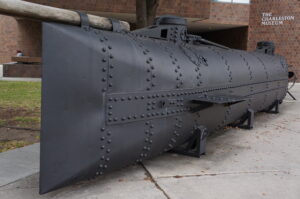
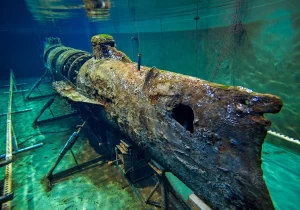 recovered in 2000 and is exhibited at the Warren Lasch Conservation Center, located on the Cooper River in North Charleston, South Carolina. A 2012 examination of the artifacts retrieved from the Hunley indicated that the submarine was approximately 20 feet from its target, the Housatonic, when the torpedo it had deployed detonated, leading also to the submarine’s demise.
recovered in 2000 and is exhibited at the Warren Lasch Conservation Center, located on the Cooper River in North Charleston, South Carolina. A 2012 examination of the artifacts retrieved from the Hunley indicated that the submarine was approximately 20 feet from its target, the Housatonic, when the torpedo it had deployed detonated, leading also to the submarine’s demise.

 My great grandson, Justin Petersen is a very happy little boy. He loves doing crazy things, like driving his toy cars off of the bench in my house, and then laughing as I go to pick it up. He tries to “help” his mom cook, by grabbing the potatoes before she peels them and taking them all over the house. He loves to make people laugh, and anything he can do to be silly…well, he is up for that. Justin is all about the laughs. His sense of humor is great big, and his pranks, tricks, and just his laugh, keep the whole household in stitches, when he gets going.
My great grandson, Justin Petersen is a very happy little boy. He loves doing crazy things, like driving his toy cars off of the bench in my house, and then laughing as I go to pick it up. He tries to “help” his mom cook, by grabbing the potatoes before she peels them and taking them all over the house. He loves to make people laugh, and anything he can do to be silly…well, he is up for that. Justin is all about the laughs. His sense of humor is great big, and his pranks, tricks, and just his laugh, keep the whole household in stitches, when he gets going.
Justin loves being a big brother to his little brother, Axel, and while there are the normal tiffs, they are best buddies. For little kids, the best friends are their siblings and cousins, because they don’t have school friends 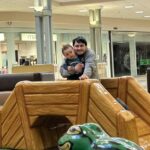
 yet. Justin was very excited to have a baby brother, even though he didn’t know quite what to do with him, but now that Axel can play, Justin really likes having him around. Justin and Axel are Irish Twins, which means that they were born less than a year apart. Justin and Axel will always be the same age from September 18th to October 14th…26 days. Their Grandma, Corrie Petersen and their aunt, Amy Royce are also Irish Twins and are the same age for 29 days each year. It’s a cool little tidbit of trivia that we love in our family. The boys also have an Irish Twin cousin (is there such a thing), named Cyler. Anyway for 5 days, they are all three the same age. It’s fun.
yet. Justin was very excited to have a baby brother, even though he didn’t know quite what to do with him, but now that Axel can play, Justin really likes having him around. Justin and Axel are Irish Twins, which means that they were born less than a year apart. Justin and Axel will always be the same age from September 18th to October 14th…26 days. Their Grandma, Corrie Petersen and their aunt, Amy Royce are also Irish Twins and are the same age for 29 days each year. It’s a cool little tidbit of trivia that we love in our family. The boys also have an Irish Twin cousin (is there such a thing), named Cyler. Anyway for 5 days, they are all three the same age. It’s fun.
Justin is growing up so fast. His vocabulary is big these days, and he knows his ABCs and numbers to eight. It’s hard to believe that he is getting so big. Nevertheless, Justin is a very loving child, and just because he is 
 growing up, doesn’t mean that he doesn’t like to feel close to those he loves. He likes to hold his mommy and daddy’s hand when they go places, and even likes to hold his baby brother’s hand too. He especially likes to hold hands when he goes to sleep. I think that is just precious. Those kinds of things are such a treasure, because as we all know, they grow out of this stage at some point, even though they never stop loving their parents and siblings…and of course, their grandparents. Justin loves his grandparents very much too. Today is Justin’s 2nd birthday!! Happy birthday sweet boy!! Have a great day!! We love you!!
growing up, doesn’t mean that he doesn’t like to feel close to those he loves. He likes to hold his mommy and daddy’s hand when they go places, and even likes to hold his baby brother’s hand too. He especially likes to hold hands when he goes to sleep. I think that is just precious. Those kinds of things are such a treasure, because as we all know, they grow out of this stage at some point, even though they never stop loving their parents and siblings…and of course, their grandparents. Justin loves his grandparents very much too. Today is Justin’s 2nd birthday!! Happy birthday sweet boy!! Have a great day!! We love you!!
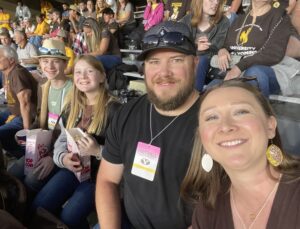
 My nephew, Ryan Hadlock has been really busy this year…and with a wide variety of activities. Ryan is a family man, married to Chelsea for almost 16½ years. He is dad to Ethan and Aurora. Ryan works very hard to give his family the very best that life has to offer. Ryan is the Compression Foreman, at Contango Energy. It is a position he was promoted to when his uncle, Mike Stevens retired, but it was a position that the bosses felt Ryan was perfect for he had been a Compression Operator, but they saw more. Ryan proved them right. Ryan works hard at his job, and he is very respected there, but his real focus is always on his family.
My nephew, Ryan Hadlock has been really busy this year…and with a wide variety of activities. Ryan is a family man, married to Chelsea for almost 16½ years. He is dad to Ethan and Aurora. Ryan works very hard to give his family the very best that life has to offer. Ryan is the Compression Foreman, at Contango Energy. It is a position he was promoted to when his uncle, Mike Stevens retired, but it was a position that the bosses felt Ryan was perfect for he had been a Compression Operator, but they saw more. Ryan proved them right. Ryan works hard at his job, and he is very respected there, but his real focus is always on his family.
Ryan’s parents, Chris and Allyn Hadlock have been building a new garage this year, and it has been a huge project. Ryan has spent a lot of time this summer working on it. They had to tear down the old garage, level the area and prepare it to allow drainage and a new retaining wall…and that was before they could even start on 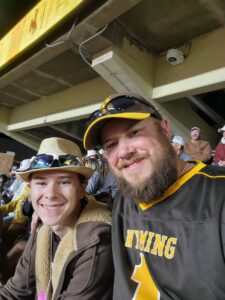
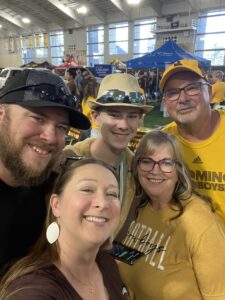 the garage. It was a group effort, with help from brothers-in-law, Mike Reed and Mike Stevens, Ryan and his son, Ethan as well. The project was a great success, and the guys had a great time. Allyn tells me that, “Ryan was such a huge help for us this summer building the garage! He was faithful to come out and sacrifice his own time to give of himself. We appreciate so much his strength and can-do attitude! Chris loved the dad/son time, and their close relationship has grown even more and gotten stronger. He really enjoys spending time with Ryan!”
the garage. It was a group effort, with help from brothers-in-law, Mike Reed and Mike Stevens, Ryan and his son, Ethan as well. The project was a great success, and the guys had a great time. Allyn tells me that, “Ryan was such a huge help for us this summer building the garage! He was faithful to come out and sacrifice his own time to give of himself. We appreciate so much his strength and can-do attitude! Chris loved the dad/son time, and their close relationship has grown even more and gotten stronger. He really enjoys spending time with Ryan!”
The Hadlock family went camping some this year too. They went to the Big Horn Mountains a few times, and thankfully they were able to do that, because after the massive fire in the Big Horns that is going on right now, things may not be the same there for a while. Ryan and Ethan went to Top Golf for a father-son fun time. That was a lot a great time, and always an important thing for men and their boys. They also went camping in the Black Hills, and then, of course, there is the inevitable job of working on the camper.

 They went to a concert last month, and another one is coming up next week! They’ve been to a few Wyoming Cowboys’ games this year too, which is a fun family time for the whole Hadlock clan. Ryan and Chris are going to a Broncos game in a couple of weeks, after attending another Cowboys’ game…an all sports weekend. Ryan and his family have been blessed to have a super good year, and they know that next year will be even better!! Today is Ryan’s birthday. Happy birthday Ryan!! Have a great day!! We love you!!
They went to a concert last month, and another one is coming up next week! They’ve been to a few Wyoming Cowboys’ games this year too, which is a fun family time for the whole Hadlock clan. Ryan and Chris are going to a Broncos game in a couple of weeks, after attending another Cowboys’ game…an all sports weekend. Ryan and his family have been blessed to have a super good year, and they know that next year will be even better!! Today is Ryan’s birthday. Happy birthday Ryan!! Have a great day!! We love you!!

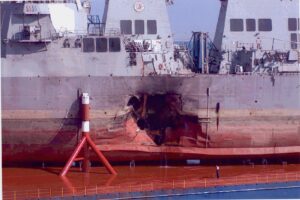 The USS Cole, an American naval destroyer, captained by Commander Kirk Lippold, arrived in Aden, Yemen at the southern end of the Arabian Peninsula for refueling, en route to join US warships enforcing trade sanctions against Iraq. At 12:15pm local time, a motorized rubber dinghy filled with explosives created a 40-by-40-foot hole in the port side of the ship, while it was docked for refueling in Aden. How could it have been that easy? The attack, which resulted in the death of seventeen sailors and wounded thirty-eight, was perpetrated by two suicide terrorists believed to be affiliated with Osama bin Laden’s al Qaeda network.
The USS Cole, an American naval destroyer, captained by Commander Kirk Lippold, arrived in Aden, Yemen at the southern end of the Arabian Peninsula for refueling, en route to join US warships enforcing trade sanctions against Iraq. At 12:15pm local time, a motorized rubber dinghy filled with explosives created a 40-by-40-foot hole in the port side of the ship, while it was docked for refueling in Aden. How could it have been that easy? The attack, which resulted in the death of seventeen sailors and wounded thirty-eight, was perpetrated by two suicide terrorists believed to be affiliated with Osama bin Laden’s al Qaeda network.
The blast resulted in significant flooding aboard the warship, causing it to list slightly. Nevertheless, by nightfall, the crew had successfully halted the water flooding in, thereby keeping the Cole afloat. Following the assault, President Bill Clinton directed US vessels in the Persian Gulf to evacuate the area and proceed to the open sea. He then dispatched large contingent of American investigators to Aden for a thorough inquiry. The group included FBI agents dedicated to probing potential connections to Osama bin Laden. Bin Laden had already been indicted in the United States for orchestrating the 1998 embassy bombings in Kenya and Tanzania, which claimed the lives of 224 individuals, among them 12 Americans, so it was not a far stretch to think he would have a hand in this attack too.
The USS Cole’s brief four-hour stopover indicates that the terrorists had inside information about its unscheduled visit to the Aden fueling station. The small boat used by the terrorists merged seamlessly with other harbor vessels aiding the Cole’s mooring process and managed to get close to the US warship undetected. Upon detonation of their dinghy, a substantial explosion ripped through the Cole’s port side, causing extensive damage to the engine room, mess hall, and living quarters. Witnesses aboard the Cole reported seeing both terrorists stand up moments before the blast, typical of suicide bombers.
In all, six individuals were suspected of involvement in the Cole attack. They were quickly detained in Yemen, but due to the lack of cooperation from Yemeni officials, the FBI has been unable to definitively connect the 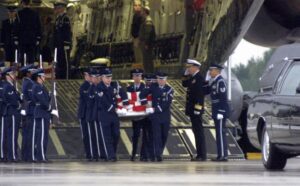
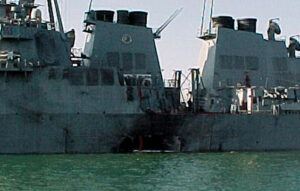 attack to bin Laden, even though we all know that he masterminded it. This kind of attack was so typical of the type of attack that would later make bin Laden well known as a major player in attacks against American targets. As for Americans, these leaks and the inability of the FBI to resolve the issue are some of the biggest reasons that many Americans don’t trust the FBI today.
attack to bin Laden, even though we all know that he masterminded it. This kind of attack was so typical of the type of attack that would later make bin Laden well known as a major player in attacks against American targets. As for Americans, these leaks and the inability of the FBI to resolve the issue are some of the biggest reasons that many Americans don’t trust the FBI today.

 My nephew, Riley Birky has had a rough year. Not like most people think of a rough year. He has had a really rough year. It started out good, but on July 4th, everything changed…everything. Riley; his little brother, Tucker Schulenberg; and a couple of friends, Landon and Dylan; had gone to pick up fireworks for the evening’s festivities. Little is known about wat happened from there, but it is suspected that someone lit a cigarette without thinking about the fireworks. Seconds later, the car was engulfed in flames. I read where they are crediting Riley with the saving of lives and preventing an accident, In the midst of driving a car that burst into flames, Riley had the presence of mind to pull over, even though he was being burned. He stopped safely and them assisted the other boys, so that all got out alive. Riley was a hero.
My nephew, Riley Birky has had a rough year. Not like most people think of a rough year. He has had a really rough year. It started out good, but on July 4th, everything changed…everything. Riley; his little brother, Tucker Schulenberg; and a couple of friends, Landon and Dylan; had gone to pick up fireworks for the evening’s festivities. Little is known about wat happened from there, but it is suspected that someone lit a cigarette without thinking about the fireworks. Seconds later, the car was engulfed in flames. I read where they are crediting Riley with the saving of lives and preventing an accident, In the midst of driving a car that burst into flames, Riley had the presence of mind to pull over, even though he was being burned. He stopped safely and them assisted the other boys, so that all got out alive. Riley was a hero. 

The boys were taken to the hospital and quickly flown to Denver, where they remained for varying lengths of time, as each on had different burns. While the struggle to recover has really hard, Riley persevered and is now back home, as are the three other boys. Their story truly is a miracle. These young men were so close to death, but they had people who were praying for them. God is so good. These days all the boys are home, Tucker is back to school, and while Riley isn’t back to work yet, he is doing really well.
Riley is a great dad to his son Ryder and bonus son, Jace. He is a great fiancé to his fiancée, Sierah Martin, and he is a great brother to Tucker. His presence in their lives is not only important…it’s vital. They rely on him so much, and Riley has stepped up to be the man they need him to be. He didn’t have to be this kind of man, but 
 Riley has proven himself to be just exactly that…a step up when needed kind of man!! I am so roud of the man Riley has become, and I know that he will continue to make his family proud.
Riley has proven himself to be just exactly that…a step up when needed kind of man!! I am so roud of the man Riley has become, and I know that he will continue to make his family proud.
Riley has a long way to go in his recovery, as do Tucker, Landon, and Dylan. The boys were all blessed in that their faces were not scarred. Nevertheless, their arms and legs will have a long road to recovery. Still, these boys are fighters, and they have many people praying for them behind the scenes. I know they will recover well and lead amazing lives. Today is Riley’s 24th birthday. Happy birthday Riley!! Have a great day!! We love you!!

